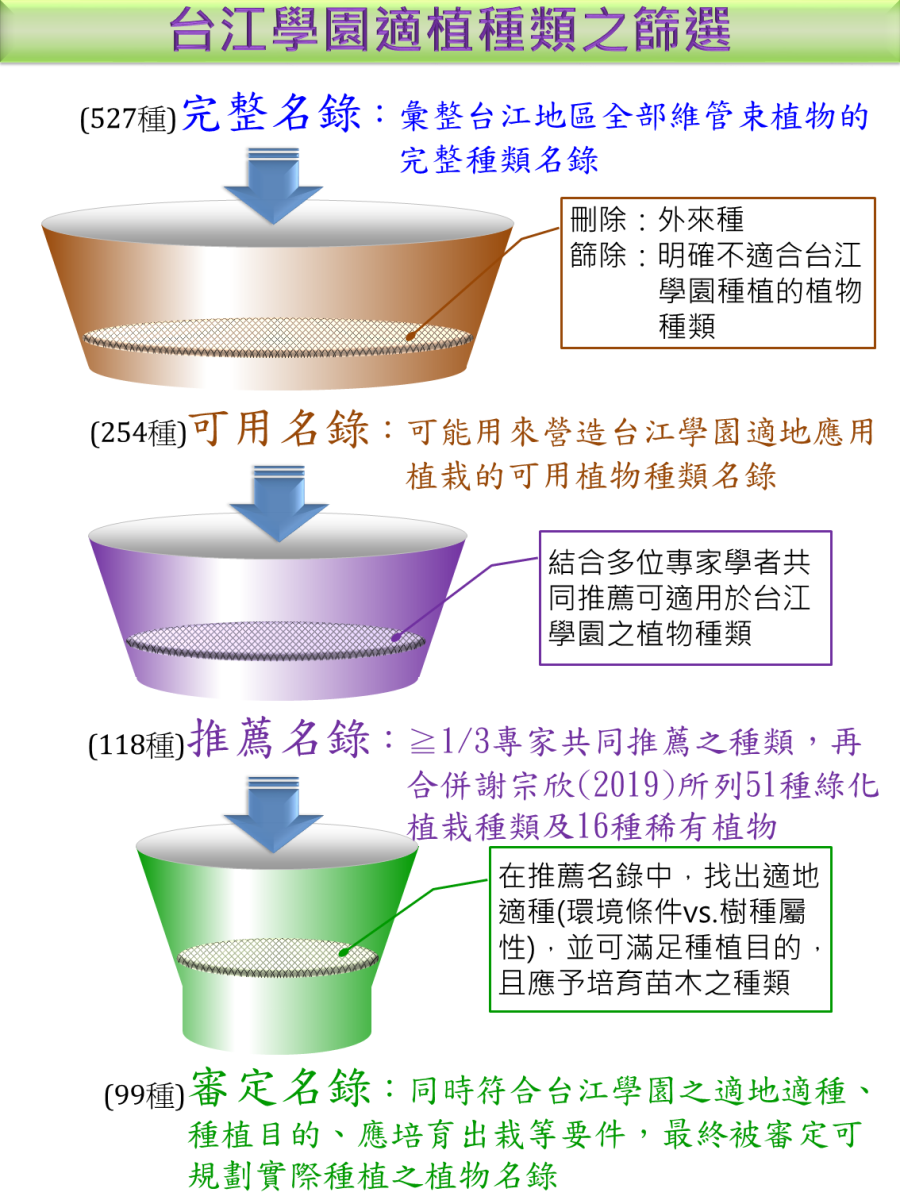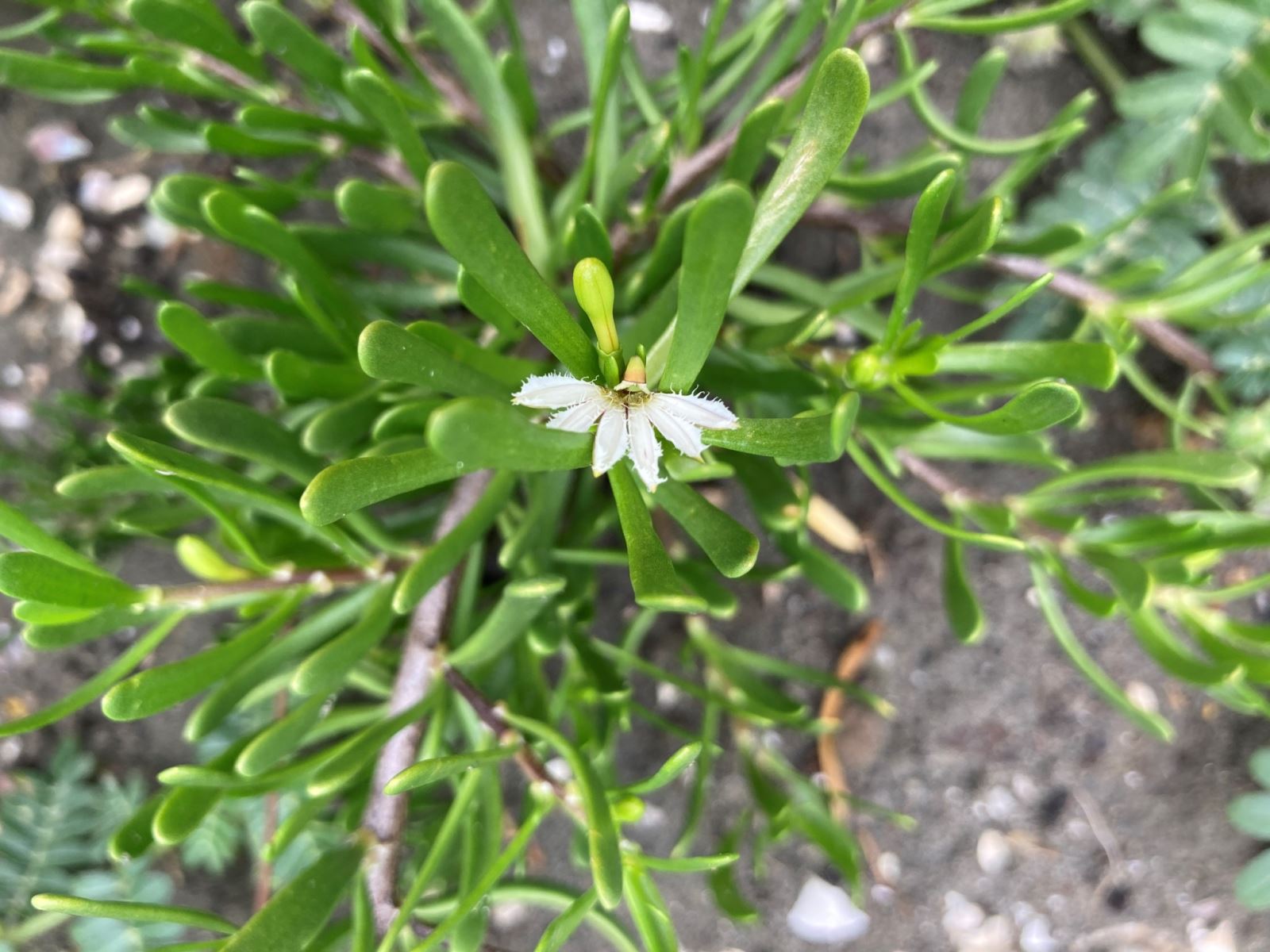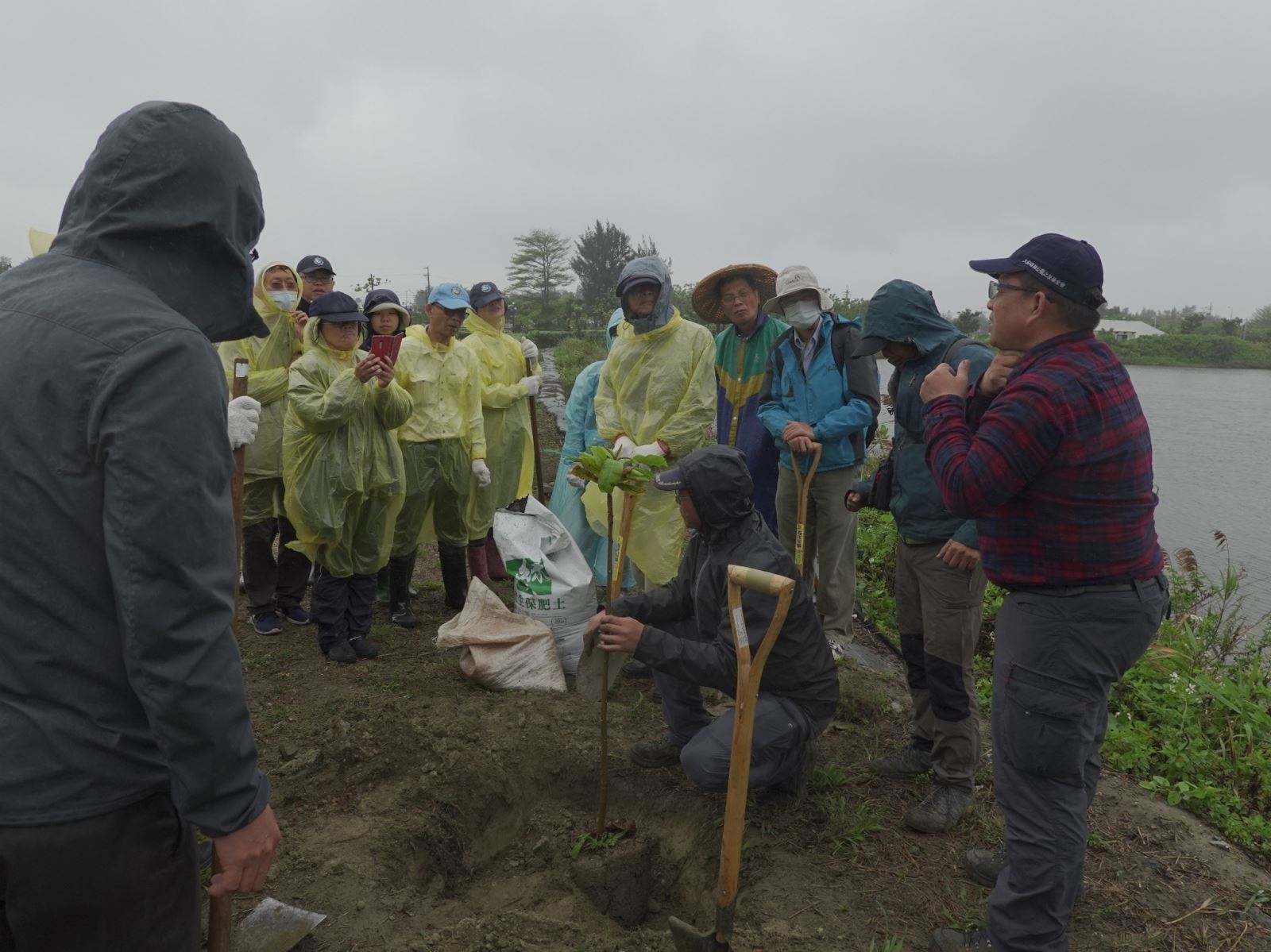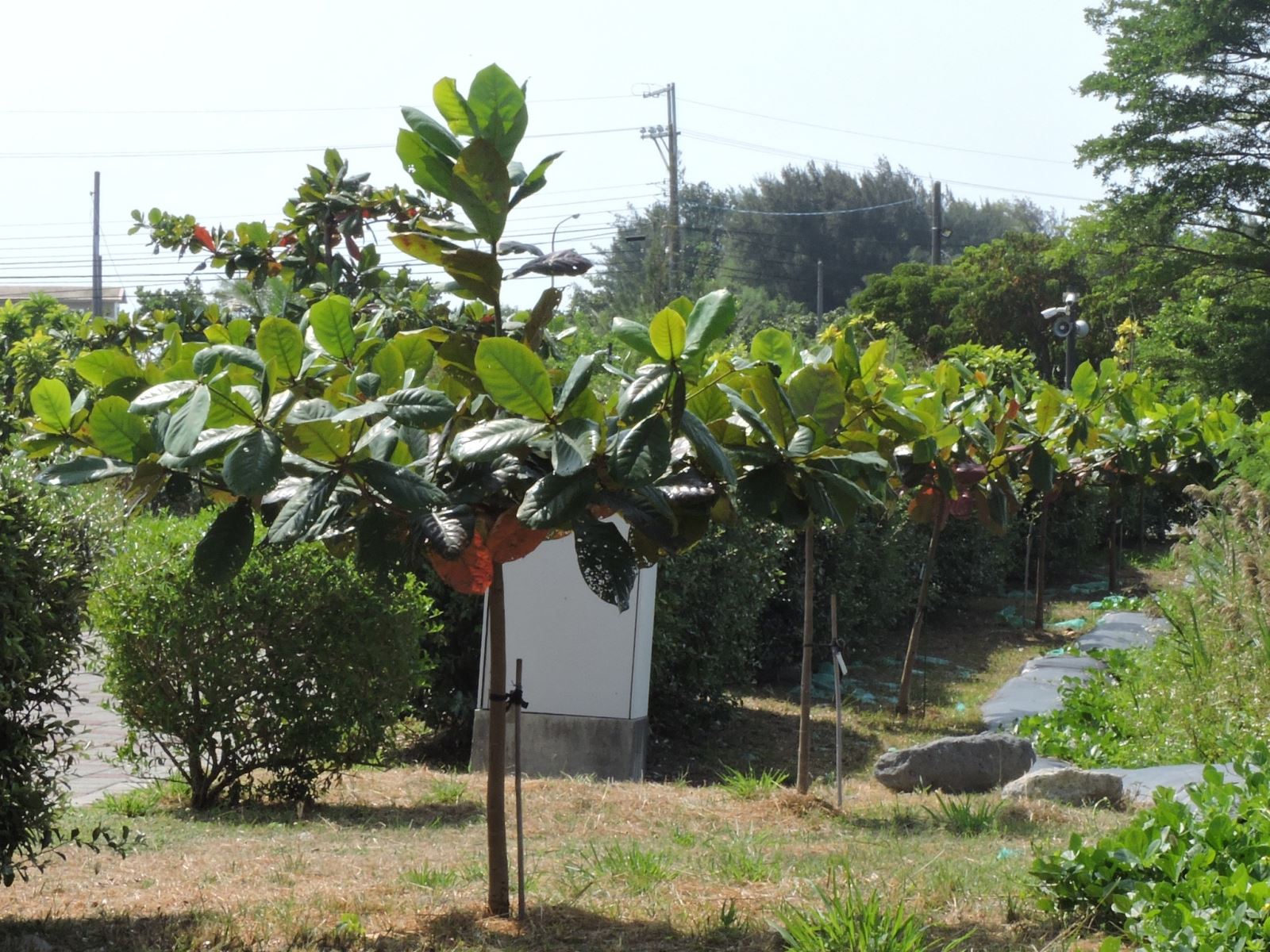Once an inland lagoon more than 200 years ago, Taijian silted up over time and became part of the land. In 2009, Taijian National Park was established, followed by the establishment of the Visitor Center & Administration Center Park in a coastal fish farm by the Yanshuei River, and the establishment of Taijian Academy.
Nowadays Taijian National Park is home to more than 500 kinds of vascular plants; among them, about 1/2 are artificially cultivated exotic plants such as alstonia scholaris and mangoes, and about 250 plants are endemic to Taiwan. By entrusting a professional team to conduct a field survey, habitat assessment, seed collection, seedling cultivation, and planting planning, Taijian National Park Administration (“Taijian Administration” hereinafter) comprehensively collected coastal plants and planted them in Taijian Academy, so that these beautiful indigenous plants can serve the function of afforestation and beautification, and that the general public can be close to those eclectic coastal plants in Taijian.
Matching Site with Trees - Select the Plant Species that should Be Planted in Taijian Academy
To gradually build the Taijian National Park Indigenous Botanical Garden, Taijian Administration entrusted a team led by Chiu Ching-an, a research fellow at the Experimental Forest Office of National Chung Cheng University, to carry out the “Taijian National Park Demonstration Construction Plan of Indigenous Plant Right-place Afforestation Application” in 2020. The most important task at the starting phase was to find out the plant species suitable to be grown in Taijian Academy. 40 experts and scholars were invited to recommend suitable species based on the Taijian National Park Plant Census conducted in 2019 by Hsieh Tsung-hsin, a professor at National University of Tainan. A total of 99 plant species (Figure 1) stood out as those that should be planted in Taijian Academy, taking into account those recommended by the experts, and the 51 indigenous afforestation species and 16 rare species recommended by Professor Hsieh Tsung-hsin in 2019, under the conditions that those plants are suitable to be planted in Taijian Academy, and that they meet the planting purposes and the criteria for cultivation and transplanting. For the 99 plant species, Taijian Academy should actively plant and regenerate them, and cultivate their seedlings.

Figure 1. The process of screening for plant species suitable to be planted in Taijian Academy
Building a Coastal Indigenous Botanical Garden: Right Place; Right Plant; Right People
In recent years the application of indigenous plants and the afforestation and beautification function of tress have gained more importance. Despite this, good-looking plants are rarely seen. This is especially true for Taijian Academy, a coastal area where plants face a harsh environment, e.g., drought, high salt content, heavy wind, and scorching sun. As such, it must be challenging to build a visually pleasant indigenous botanical garden. It’s about having the right people plant the right plant in the right place. In other words, local environment should be analyzed, plants adaptable to the environment should be selected, and the planting purposes should be met. Only by planting the right trees in the right place can peoples’ expectations be met.
Many plants are not growing well nowadays, primarily due to incomplete seedlings. In addition, seedlings are not readily available for many plants intended to be planted in Taijian Academy, especially rare plants. As such, the only way to build an Indigenous botanical garden in coastal Taijian Academy gradually is by following the procedures, namely, nursery stock investigation, seed source collection, seedlings cultivation, assessment for a right place, transplanting at the right time, and nursery management.
The key to successfully growing beautiful plants in Taijian is to develop robust seedlings, plant them with the correct method (rather than the engineering method for planting trees), and then nurse them for a short period of time so that they can adapt to the harsh costal environment.
Preliminary results can be seen so far; more to be expected in the future
At present, the team led by the research fellow Chiu Ching-an has planned to grow four types of plant clusters in Taijian Academy, namely, mangrove plant area, salt marsh plant area, coastal and psammophyte plant area, and plain and open forest area, and to plant varieties of plants in suitable areas to create a diverse botanical garden. With the efforts from Taijian Academy employees and volunteers in their working holidays, these visions are gradually fulfilled.
Figure 2 shows the scaevola hainanensis planted during the working holiday in 2020. After growing for half a year, it has been integrated with the waterfront environment of Taijian Academy and has also coexisted and prospered with mudskippers and fiddler crabs. Scaevola hainanensis is a plant listed as Critically Endangered (CR) in the A Preliminary Red List Of Taiwanese Vascular Plants for 2017, and disperses among habitats with a total area less than 0.5 hectare. After a series of step-by-step efforts, the scaevola hainanensis regenerated by Taijian Academy grows well and even blooms (Figure 3), which is a step forward towards the fulfillment of the national park’s conservation missions.
In addition to the regeneration of rare plants, the key goals also include the application of indigenous plants in Taijian for afforestation and beautification purposes. In March 2020, the team led by research fellow Chiu brought a 1-foot planting green bag which held a robust seedling of terminalia catappa, about 120 cm in height; in rainy weather, which is suitable for transplanting, they invited a professional arborist to demonstrate how to plant trees correctly (Figure 4). In September in the same year, half a year after being planted in the right place with the right method, the terminalia catappa was showcasing its vigor (Figure 5). How many years do you think it takes for Taijian Academy to provide the public with a trail lined with indigenous plants?
With such professional and enthusiastic participation of all parties, the plants indigenous to Taijian will be stretching at ease for long; the Indigenous Botanical Garden of Taijian Academy in the future must be worth your expectations. (This article is adapted from “Taijian 99 — Building an Indigenous Botanical Garden” by Chiu Ching-an, Hsieh Tsung-hsin, Teng Shu-lin, Kuo Chia-i, Yang Chia-jung, and Li I-ju.)
Figure 2. After half a year of planting, the scaevola hainanensis has integrated with the environment and coexisted and prospered with animals.

Figure 3. The scaevola hainanensis regenerated in Taijian Academy is blooming.

Figure 4. With a 120-cm tall seedling which is grown through cultivation, a professional arborist is demonstrating how to plant trees correctly.

Figure 5. Terminalia catappa planted during the working holiday in March is showcasing its vigorous vitality in September.